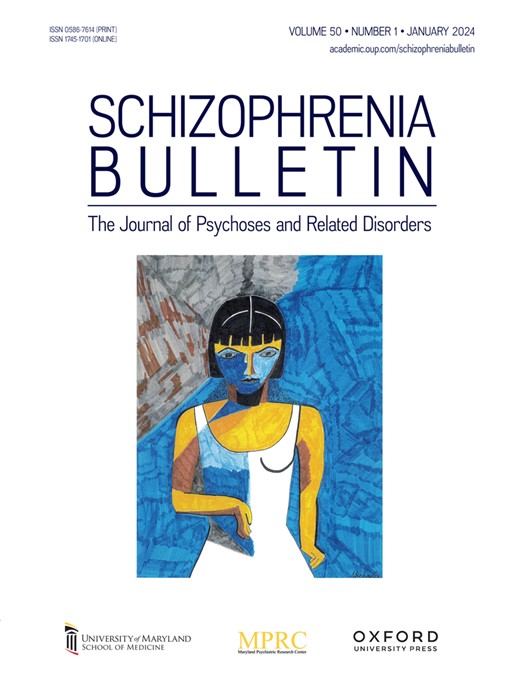1 DESIGN OF FACIAL EMOTION RECOGNITION INTERACTIVE SYSTEM FOR SCHIZOPHRENIA PATIENTS
IF 5.3
1区 医学
Q1 PSYCHIATRY
引用次数: 0
Abstract
Background Schizophrenia is a serious mental disorder, and patients often have significant differences from ordinary people in perception, thinking, emotions, and behavior. At present, impaired facial emotion recognition ability is one of the common symptoms of schizophrenia patients. Schizophrenia patients have difficulty accurately recognizing the emotional information conveyed by others’ facial expressions, which has a negative impact on their life and learning. In recent years, with the continuous development of visual technology, it has corresponding applications in the treatment of schizophrenia patients. It can use facial emotion recognition to help patients train their emotional perception ability and play a certain role in the treatment of patients’ social function. Therefore, in order to improve the symptoms of schizophrenia patients, a facial emotion recognition interactive system specifically designed for schizophrenia patients is studied and designed, and its application effect in the treatment of schizophrenia patients is analyzed. Methods In the study, 30 patients with schizophrenia were selected, aged between 20 and 50 years old. At the same time, 30 healthy volunteers matched in age, gender, and experimental group were selected as the control group group for the study. Among them, both the experimental group and the control group underwent a basic psychological assessment first, including emotions, sleep status, learning ability, self harm tendency, anxiety, inferiority complex, appetite, relaxation, and other aspects. Specific experimental process: The experimental group used a facial emotion recognition interactive system for 8 weeks of training, 5 times a week, with each session lasting 30 minutes. The system displays images and videos of different facial expressions for patients to recognize and provide feedback, while also providing correct answer prompts and emotional interpretation guidance. The control group engaged in regular daily activities at the same time without any other interventions. After 8 weeks of the experiment, both groups underwent the same psychological evaluation again, there was a statistically significant difference before and after (P<0.05). Results Table 1 shows the results of two experimental tests. After training with a facial emotion recognition interactive system, the experimental group showed significant improvements in emotion recognition, sleep status, self harm tendency, anxiety, inferiority complex, appetite, and relaxation, and all indicators gradually approached the normal level of the control group. Discussion The experimental results indicate that the facial emotion recognition interactive system for patients with schizophrenia has significant therapeutic effects. Through training, patients have significantly improved their facial emotion recognition ability, which has a positive impact on improving their psychological and social abilities. After the experiment, the experimental group showed significant improvements in psychological indicators such as sleep status, self harm tendency, anxiety, inferiority complex, appetite, and ease of mind. The research content will also provide technical support for the treatment of patients with schizophrenia.求助全文
约1分钟内获得全文
求助全文
来源期刊

Schizophrenia Bulletin
医学-精神病学
CiteScore
11.40
自引率
6.10%
发文量
163
审稿时长
4-8 weeks
期刊介绍:
Schizophrenia Bulletin seeks to review recent developments and empirically based hypotheses regarding the etiology and treatment of schizophrenia. We view the field as broad and deep, and will publish new knowledge ranging from the molecular basis to social and cultural factors. We will give new emphasis to translational reports which simultaneously highlight basic neurobiological mechanisms and clinical manifestations. Some of the Bulletin content is invited as special features or manuscripts organized as a theme by special guest editors. Most pages of the Bulletin are devoted to unsolicited manuscripts of high quality that report original data or where we can provide a special venue for a major study or workshop report. Supplement issues are sometimes provided for manuscripts reporting from a recent conference.
 求助内容:
求助内容: 应助结果提醒方式:
应助结果提醒方式:


